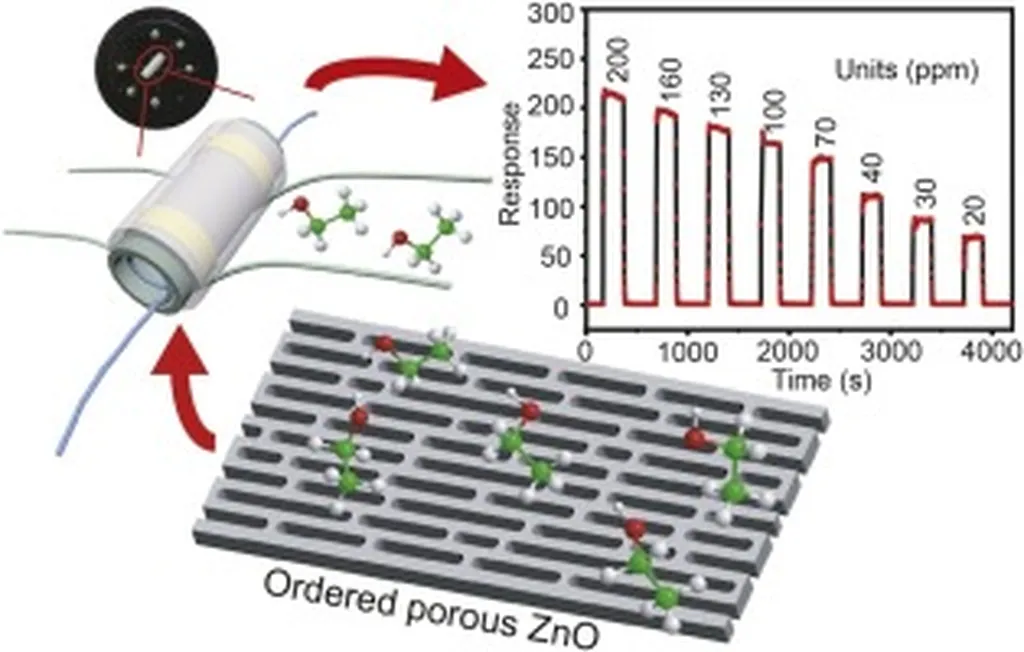In the heart of Tunisia, at the Faculty of Sciences of Gabes, a team of researchers led by Marwa El Beji has made a significant stride in the development of gas sensors, with implications that could ripple through the energy sector. Their work, published in the journal Materials Research Express—translated to English as “Expressions of Materials Research”—focuses on zinc oxide (ZnO) nanoparticles and their potential to revolutionize ethanol detection.
The team synthesized ZnO nanoparticles using a modified sol-gel technique, a method known for its precision and control over particle size and morphology. The nanoparticles were then subjected to a battery of tests, including X-ray diffraction, transmission electron microscopy, and photoluminescence, to name a few. The results were promising: the nanoparticles exhibited a hexagonal wurtzite structure, uniform in shape and size, with a slight oxygen deficiency—a finding that could be key to their enhanced sensitivity.
“This oxygen deficiency, or oxygen vacancies, is crucial,” El Beji explained. “It’s what makes our ZnO nanoparticles so sensitive to ethanol. It’s like having tiny, highly reactive spots on the surface of the nanoparticles that can quickly and accurately detect the presence of ethanol gas.”
The team then used these nanoparticles to create a thick film gas sensor. When tested, the sensor demonstrated high sensitivity and selectivity to ethanol at an operating temperature of 450°C. It also showed a quick response and recovery time, making it a potential game-changer in the energy sector where ethanol detection is crucial.
The implications of this research are far-reaching. Ethanol, a volatile organic compound, is widely used in the energy sector as a fuel and fuel additive. Accurate and rapid detection of ethanol is essential for safety, quality control, and environmental monitoring. The ZnO nanoparticle-based sensor developed by El Beji’s team could provide a reliable and efficient solution for these needs.
Moreover, the research opens up new avenues for the development of other gas sensors. The modified sol-gel technique used to synthesize the ZnO nanoparticles could be applied to other materials, potentially leading to a new generation of highly sensitive and selective gas sensors.
As we look to the future, the work of El Beji and her team serves as a reminder of the power of innovation and the potential of nanomaterials to shape our world. It’s a story of science pushing boundaries, of researchers delving deep into the nanoscale to find solutions that could have a significant impact on our macro world. And it’s a story that’s far from over. With further research and development, the ZnO nanoparticle-based sensor could become a staple in the energy sector, and the modified sol-gel technique could pave the way for even more advanced sensors. The future, it seems, is looking bright—and highly sensitive.

